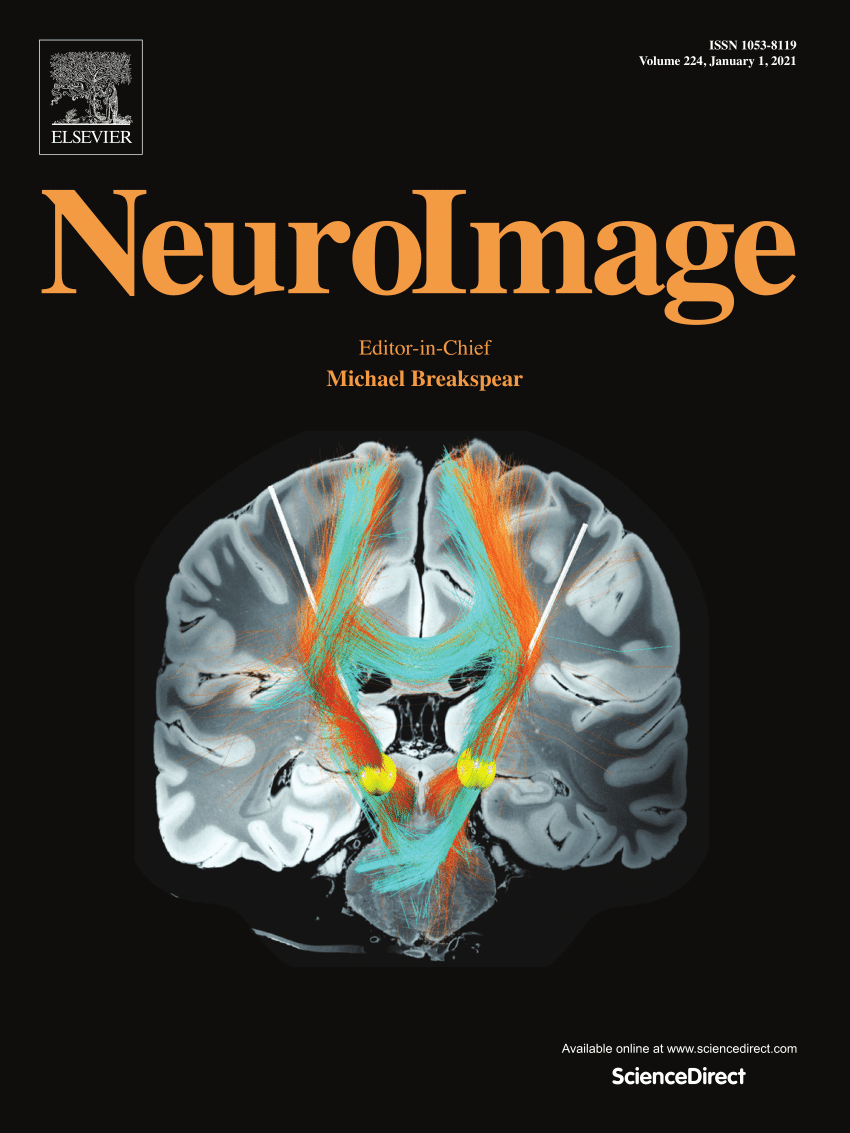Neurovascular coupling of inhibitory control in late-onset depression: a simultaneous EEG-fMRI study
IF 4.7
2区 医学
Q1 NEUROIMAGING
引用次数: 0
Abstract
Depression is a leading cause of disability that exerts an impact on neurocognitive functions. Individuals with major depressive disorder (MDD) have shown alterations of processes underlying response inhibition, which is the cognitive process that permits the suppression of habitual or natural behavioural responses to stimuli to select a more appropriate response that is coherent with the goal; these alterations have been correlated with cognitive deficits, especially in older adults. Electrophysiological (EEG) and functional magnetic resonance imaging (fMRI) studies have investigated the neuronal and hemodynamic process underlying inhibition through tasks measuring the ability to suppress a dominant response when non-target stimuli are shown and reported differences between healthy controls (HCs) and MDD subjects. However, these were unimodal studies that provided an incomplete picture of the phenomenon, due to the single technique sensitivity and limited by the characteristics of each technique itself.
In this study, we performed an EEG-driven fMRI analysis to explore the different hemodynamic correlates of specific event-related potentials (ERPs) of inhibitory control in late-onset MDD during a visuomotor Go/No-Go task. The dataset was composed of 18 older adult HCs and 18 late-onset MDD patients.
Behavioral analysis showed higher response time to target stimuli in inhibitory blocks and lower percentage of correct answers for target stimuli in MDD compared to HCs. ERP analysis revealed the inhibitory effect for both N2 and P3 in both groups. Moreover, EEG-driven fMRI analysis showed alterations in the MDD group in the superior temporal gyrus and cerebellar areas for N2 correlates, whereas in the supramarginal, left rolandic, and Heschl’s areas for P3 correlates.
The study showed the potentiality of the EEG-fMRI integration for investigating complex cognitive processes. Specifically, the EEG-driven fMRI analyses showed different correlates for separate cognitive processing steps, N2 and P3, highlighting differences between MDD and HC.

迟发性抑郁症中抑制控制的神经血管耦合:同时进行的脑电图-功能磁共振成像研究。
抑郁症是导致残疾的主要原因,对神经认知功能产生影响。重度抑郁症(MDD)患者表现出潜在反应抑制过程的改变,反应抑制是一种认知过程,它允许抑制对刺激的习惯性或自然行为反应,以选择与目标一致的更合适的反应;这些改变与认知缺陷有关,尤其是在老年人中。电生理(EEG)和功能性磁共振成像(fMRI)研究通过测量非目标刺激时抑制显性反应的能力的任务,研究了潜在抑制的神经元和血流动力学过程,并报告了健康对照(hc)和重度抑郁症受试者之间的差异。然而,由于单一技术的敏感性和每种技术本身的特点的限制,这些都是单模态研究,提供了不完整的现象图景。在这项研究中,我们进行了脑电图驱动的fMRI分析,以探索在视觉运动Go/No-Go任务中迟发性重度抑郁症抑制控制的特定事件相关电位(ERPs)的不同血流动力学相关性。该数据集由18名老年成年hc和18名迟发性MDD患者组成。行为分析显示,与hc相比,MDD患者对目标刺激的反应时间更长,对目标刺激的正确回答比例更低。ERP分析显示两组对N2和P3均有抑制作用。此外,脑电驱动的fMRI分析显示,MDD组在颞上回和小脑区出现N2相关改变,而在边缘上、左罗兰区和Heschl区出现P3相关改变。这项研究显示了EEG-fMRI整合在研究复杂认知过程中的潜力。具体来说,脑电图驱动的fMRI分析显示,不同的认知过程步骤N2和P3具有不同的相关性,突出了MDD和HC之间的差异。
本文章由计算机程序翻译,如有差异,请以英文原文为准。
求助全文
约1分钟内获得全文
求助全文
来源期刊

NeuroImage
医学-核医学
CiteScore
11.30
自引率
10.50%
发文量
809
审稿时长
63 days
期刊介绍:
NeuroImage, a Journal of Brain Function provides a vehicle for communicating important advances in acquiring, analyzing, and modelling neuroimaging data and in applying these techniques to the study of structure-function and brain-behavior relationships. Though the emphasis is on the macroscopic level of human brain organization, meso-and microscopic neuroimaging across all species will be considered if informative for understanding the aforementioned relationships.
 求助内容:
求助内容: 应助结果提醒方式:
应助结果提醒方式:


